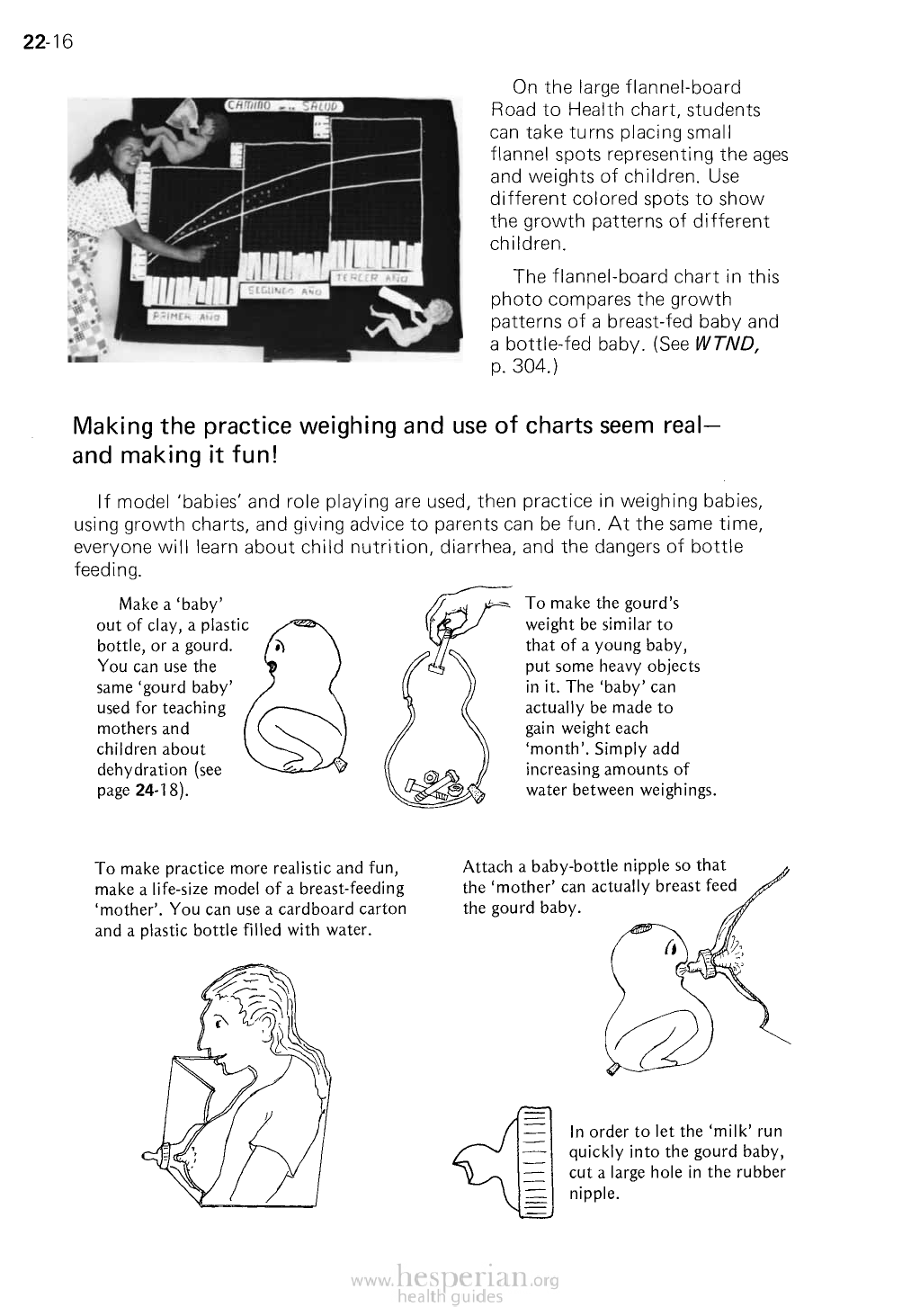
22-18
On the large flannel-board
Road to Health chart, students
can take turns placing small flannel
spots representing the ages and
weights of children. Use different
colored spots to show the growth
patterns of different children.
The flannel-board chart in this
photo compares the growth
patterns of a breast-fed baby and
a bottle-fed baby. (See WTND, p.
304.)
Making the practice weighing and use of charts seem real—
and making it fun!
If model ‘babies’ and role playing are used, then practice in weighing babies,
using growth charts, and giving advice to parents can be fun. At the same time,
everyone will learn about child nutrition, diarrhea, and the dangers of bottle
feeding.
Makca’baby’ out
of clay, a plastic
bottle, or a gourd.
You can use the
same ‘gourd baby’
used for teaching
mothers and
children about
dehydration (see
page 24-18).
To make the gourd’s
weight be similar to
that of a young baby,
put some heavy objects
in it. The ‘baby’ can
actually be made
to gain weight each
‘month*. Simply add
increasing amounts of
water between weighings.
To make practice more realistic and fun,
make a life-size model of a breast-feeding
‘mother’. You can use a cardboard carton
and a plastic bottle filled with water.
Attach a baby-bottle nipple so that
the ‘mother* can actually breast feed
the gourd baby.
In order to let the ‘milk’ run
quickly into the gourd baby,
cut a large hole in the rubber
nipple.